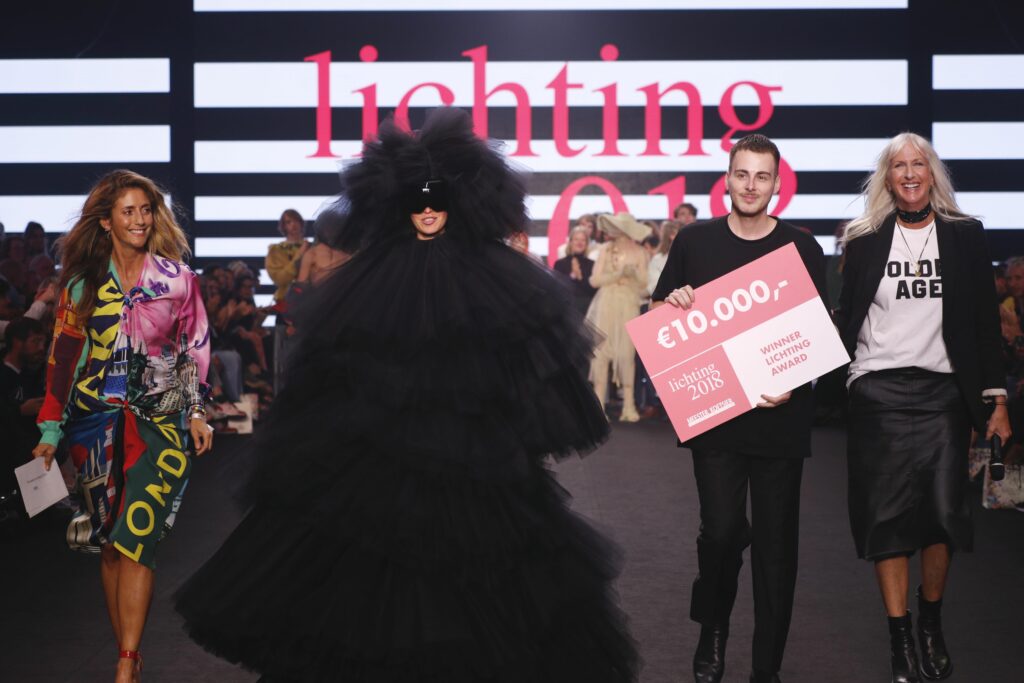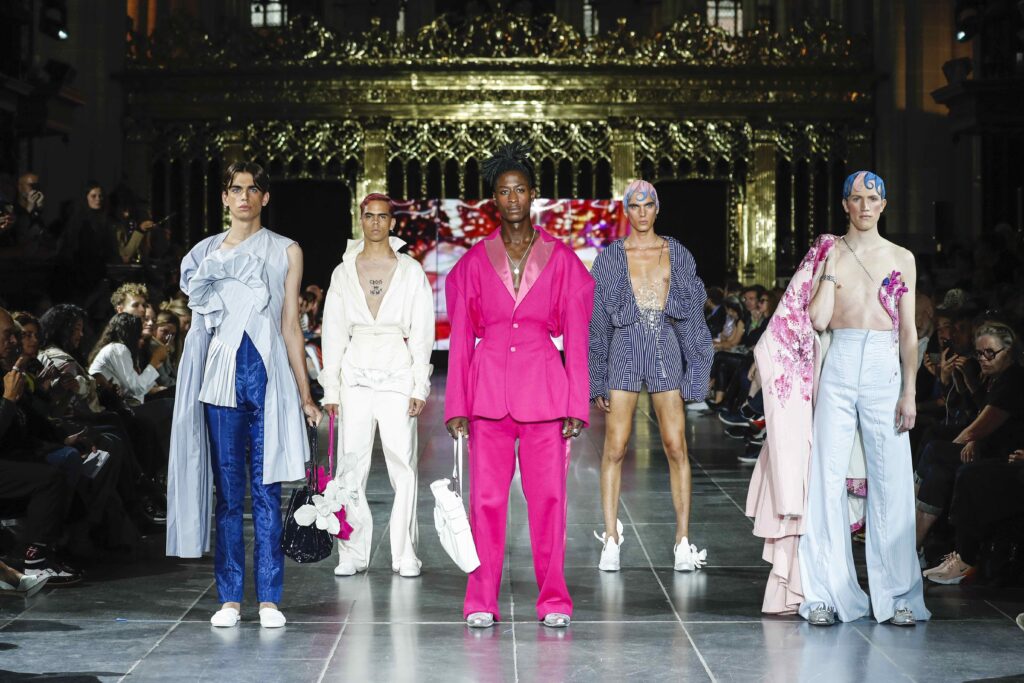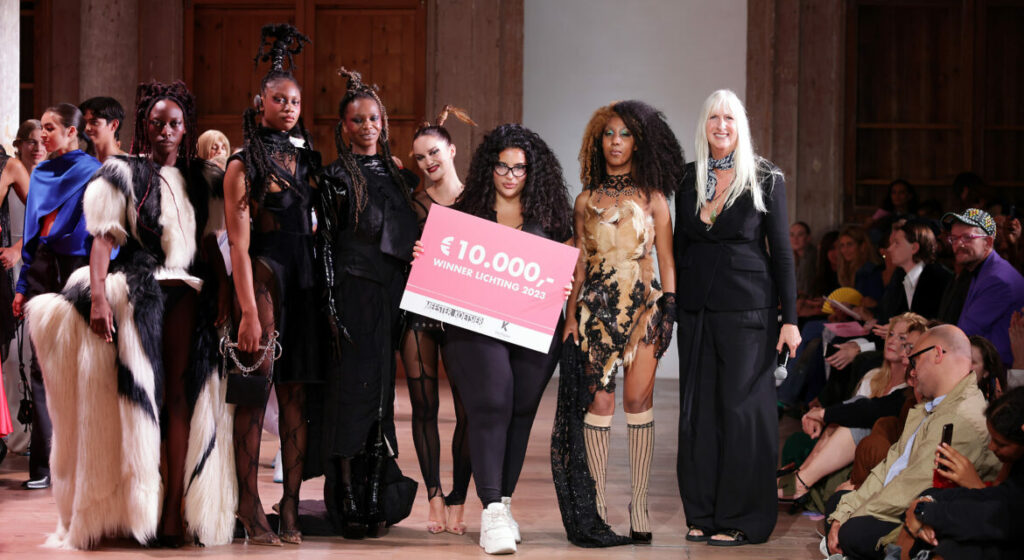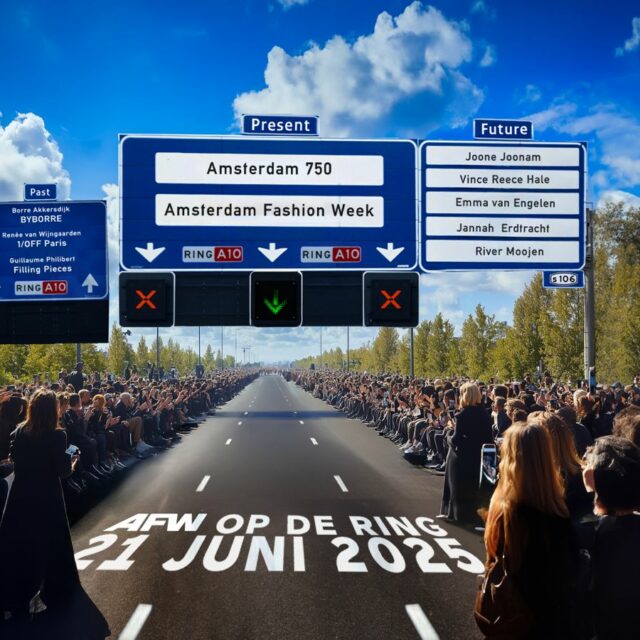Each year, Lichting brings together the most talented individuals from Dutch fashion academies. Its show therefore, institutes the highlight of Amsterdam Fashion Week. AFW recently had the privilege of conducting an in-depth interview with founder Mariette Hoitink and project manager Rubia Heyer, shedding light on the intriguing aspects of what truly transpires behind the scenes of this highly prestigious annual fashion competition.
Mariette, next to being the founder of Lichting, you are also committed to supporting young talent with the Jean School. What do you find the most rewarding moment to witness in the career of your pupils?
Mariette: “Throughout my career, I learnt to recognise talent very easily. Talent alone however, won’t get you as far. It’s a matter of combining this talent with perseverance and resilience. If you understand that and you work hard, you will get there. I find it so interesting to observe the development young creatives go through and I really enjoy seeing the result. Take Lisi Herrebrugh for example; she is a former Lichting participant and is now taking over the world as the Creative Director of BOTTER. I think that’s really cool. I like to meet creatives that haven’t yet discovered their strength, but I find turning talent into a business the most rewarding.”
How do you approach the selection process of the Lichting winner? Are there certain criteria that hold more weight in the final decision?
Mariette: “Not at all. We actually don’t have any power over the final decision. We solely collect the talents that are presented to a Dutch jury. 10 of them are then selected to prove themselves to an international jury. Myself and Rubia don’t decide anything. That said, the zeitgeist of course plays a major part in the decision-making of the jury panel. It’s funny but I’ve noticed a number of major themes returning every year: sex, identity, family matters and mental health. Some years the selected collections feel more heavy or dark. That wasn’t the case this year. I remember that the year Ferry Schiffelers won Lichting, the jury said something along the lines of: “I hope we don’t get to see any more collections about death this year.” Next thing you know, Ferry presents his collection, which was about funerals and contained ensembles that were exclusively made in the colour black. The jury cried when that collection came out during the final showcase. Despite their hesitation towards particular concepts that deal with darker concepts, they were incredibly moved and chose Schiffelers as the winner of that year. What I’m trying to say is that there are no preconceived criteria. What matters is that the jury applies its expertise when looking at the graduation collections.”

Every year, you select an international as well as a Dutch jury panel. How do you assemble the jury panel?
Mariette: “Over the years, you gather so many favourites on your list, and then it really becomes a matter of availability. Some people have actually been on our list for 10 years. We also pay attention to diversity in disciplines. We try to involve one designer, a member of the press, one buyer, someone from commerce and someone with an educational background, so that all perspectives are included.”
Comprised of members from different disciplines, I can imagine each panel member has a different opinion or even a different favourite candidate. How does that translate to backstage when they need to come to a decision?
Rubia: “It really is a huge discussion every year. They usually all get along, but when it comes down to the fact that they have to choose who presents the Netherlands best on an international scale, they throw camaraderie overboard and focus completely on their own opinion. Then suddenly they all no longer agree with each other. What is “best” is of course very nuanced. The assessment criteria are different for each jury member; therefore, the vote has never been unanimous and there are always fierce debates. Two or three years ago, we had an incident where after the show it wasn’t decided who was going to be the winner, and then they couldn’t come to an agreement. This obviously caused panic for everyone involved in the production of the show. Now, they actually have to make a decision after the final dress rehearsal to avoid the stress surrounding the time pressure for the announcement. We are also always checking to see if they at least already have a top three. This time it happened again that a top three was finally determined, and then completely changed again at the last minute. Bottom line, there are certainly returning factors that play a part in the decision-making process. “Who will benefit most from those 10,000 euros?” is a question that the jury always keeps in consideration when deciding. In addition, the question: “who has the capacity to put on a complete solo show at Amsterdam Fashion Week?” also weighs heavily on the final decision.”

Lichting brings together graduates from every Dutch fashion academy. Each school has its own style, connotations that are unconsciously linked. The students who best represent the message of the academy in question will logically also be put forward during the Lichting selections. To what extent has this led to Lichting’s open call policy that has now been in place for two years?
Mariette: “Every school indeed has its own style and there is nothing wrong with that. In a sense, these academies represent their own brand. There are nuances, but eventually you can distinguish certain characteristics. That is why it’s nice that our jury is not tied to the academies. I think it’s good that an academy stands for something, and I think that to a certain extent, students also base their choice on that. One academy has a textile department, some host more workshops, and others puts forward a more experimental or conceptual approach. This also ensures diversity in candidates. Which flavour you eventually choose usually suits you as a designer best. I think this process is very interesting.
At one point however, we had a jury member, Gijsje Ribbens, who said to me: “when I started at ArtEZ I already knew that I would never be chosen for Lichting.” That actually initiated the idea to host an open call. We then decided that the academies could still indicate their favourite, but that the other final year students could also register. This exposed us to a larger variety of design talents whilst still ensuring the academies were able to have a say in the matter. Now, everyone gets a chance to participate in Lichting, which makes the program more inclusive.”
Previous edition, AMFI graduate Ruben Jurriën was awarded with the Lichting 2022 prize, and turned out to be a commercial success. Who do you think has the most commercial potential out of the 2023 Lichting finalists?
Mariette: “I think Bastiaan Reijnen and Floyd Rorije both have a tremendous talent to sell themselves. On the other hand, you have Annalie van Doorn’s scarves which have the potential to be sold worldwide. There were actually quite a few collections with a strong commercial side. Tim van der Plas produced this extremely powerful image of one his looks for example, which I would really like to get my hands on. That also holds commercial value. Eva Marie-Louise Vos forgot a pair of bloomers she made at the jury meeting, these bloomers with the words ‘Bimbo Bitch’ now hang proudly on my office wall. She is what she makes, and I always find that the most beautiful thing to see. If she actually decided to sell her creations, she would sell out internationally in minutes.”

This year, Yousra Razine Mahrah won the Lichting prize. Why, in your opinion, did she strike the jury as the most noteworthy design talent of 2023?
Mariette: “What I hadn’t realised when I met Yousra, is that her family had absolutely no idea what their daughter had been doing at ArtEZ for the last four years. She has a tailoring background, had been living within two divided worlds, and gradually discovered during her time at the academy how she can weave those two worlds together, or at least allow them to coexist. I found it interesting to see how she deals with her background as a Muslim woman and the exploration of her own identity in a beautifully nuanced way. What she showed us is a very powerful image of a culture, translated to goat skin and combined with lingerie, in a context of body positivity and femininity. She was also so extremely humble, she had never really thought about the idea that she could win, and therefore didn’t see the need to tell her parents about it. I thought that was very pure. I was extremely moved and still get goosebumps when I think of her final showcase during AFW 2023.”

What moment during the Lichting 2023 trajectory has stuck with you the most? Perhaps a conversation, a triumphal instance or an image that’s glued to your retina?
Rubia: “Normally, the moment that I look back on most fondly is always during the panel pitches because it is so beautiful to see how the students tell their story. This year however, we had a major production scare which still raises my heartbeat when I think about. The moment the audience entered the show was an absolute nightmare. People told me afterwards how they saw the panic emerging in my eyes. There were about 150 too many people in that room, and I had to tell the most important guests who had to sit in the front row to find a spot in a corner somewhere else. People, out of lack of space, sat or stood in places where the models had to walk; I almost lost it. Simultaneously, this also created such an energy in that room, it was like electricity. This in combination with the perfect music produced by Joost and Sander and the brilliant choreography, made it a show that I will never forget.”
Mariette: “To me this was a beautiful representation of a real Amsterdam mentality, to see these extremely important people go: “I just want to see the show, it is what it is, I’m going to sit on the floor.” I was also completely overwhelmed; I didn’t know where all those people came from. What’s more is that we had a very intense panel discussion beforehand, I hadn’t drunk or eaten anything at all, and then had to struggle my way through the crowd and smile to sort of appear calm. To conclude my thought process surrounding this memory, it became clear to me that what we are able to achieve together with Danie and Lisanne from Amsterdam Fashion Week, Meester Koetsier Foundation and van Kaam advocaten, is extremely valuable, and it would mean so much to be able to invite even more guests to witness this event. So many people in the industry look forward to the Lichting show, so hopefully next year, with the help of AFW and other sponsors, we can make this show available to more people.”




